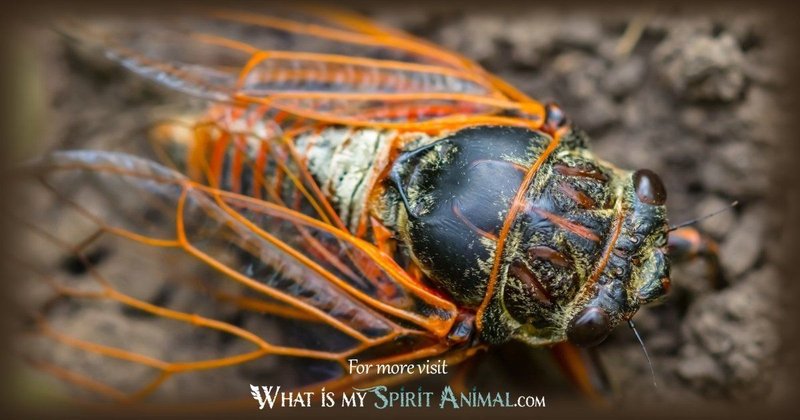
If you’ve ever found yourself mesmerized by their rhythmic sounds or curious about their life cycle, you’re not alone. People have been drawn to cicadas’ unique characteristics for generations. Let’s take a closer look at how various cultures view these remarkable insects and the meanings they’ve assigned to them.
Understanding Cicadas: A Brief Overview
To appreciate the cultural symbolism of cicadas, it helps to understand a bit about their life cycle. These insects spend most of their lives underground as nymphs, sometimes for up to 17 years! Once they emerge, they go through a transformation, shedding their exoskeletons and taking on their adult form. This process of metamorphosis is where much of the symbolism comes from, representing change, growth, and even resurrection.
When cicadas finally do surface, they create a loud chorus, announcing their presence to the world. The sound can be quite overwhelming, but it showcases their vibrant energy and the arrival of a new life stage. This dramatic emergence has led many cultures to associate cicadas with themes of renewal and vitality.
Cicadas in Ancient Cultures
In ancient Chinese culture, cicadas symbolize immortality and rebirth. You might come across cicadas in Chinese art and poetry, often depicted as a sign of good fortune. The belief stems from their unique life cycle; they represent the spirit that transcends the physical world, emerging from the underground. This symbolism is particularly strong during significant events, such as weddings or new beginnings, where cicadas are seen as a positive omen.
Similarly, in ancient Egypt, cicadas were linked to the concept of eternal life. The word “cicada” comes from the Latin *cicada*, meaning “one who sings.” This connection to music and vitality made them a symbol of life after death, often found in tomb paintings and hieroglyphs. Their presence in these artworks was meant to remind the deceased of the joys of life and the possibilities of rebirth.
Native American Symbolism
Many Native American tribes hold cicadas in high regard, viewing them as powerful symbols of *transformation* and *renewal*. For example, some tribes see cicadas as messengers from the spirit world, often associated with change and the idea of coming into one’s power. In rituals, cicadas can symbolize the shift from one life stage to another, reminding participants of the importance of embracing their journeys.
One intriguing aspect of cicadas in Native American culture is their role in storytelling. Their songs often inspire tales that emphasize resilience and the importance of embracing change. Much like the cicada’s own life cycle, these stories can teach lessons about patience and the beauty of transformation.
Modern Interpretations of Cicadas
In today’s society, cicadas still capture our imagination, often seen as symbols of perseverance and strength. Their long wait underground symbolizes the idea that good things take time to manifest. You might relate this to personal growth—sometimes, we need to “hibernate” before we can emerge and share our talents with the world.
Moreover, cicadas also represent the fleeting nature of time. Their brief adult lives serve as a reminder to cherish our moments, as nothing lasts forever. This perspective has found its way into literature and art, where cicadas are often depicted alongside themes of transience and appreciation for life’s impermanence.
Cicadas in Literature and Art
Cicadas have inspired countless works in literature and art, often embodying deeper meanings tied to their life cycle. In literature, they are frequently used as metaphors for themes of change, time, and the inevitability of death. For instance, in Japanese poetry, cicadas often symbolize the beauty of summer, highlighting the fleeting nature of life. Their songs are woven into verses that reflect on the transitory moments that define our existence.
In visual arts, cicadas appear in various forms, from traditional paintings to modern sculptures. Artists use the cicada to depict the beauty of transformation and to draw connections between life cycles. Their vibrant colors and elaborate designs often capture viewers’ attention, sparking conversations about the deeper meanings behind these intriguing creatures.
Environmental Symbolism and Ecological Importance
Beyond cultural symbolism, cicadas play a significant role in our ecosystems. They contribute to soil health by aerating it and providing nutrients as they die and decompose. This connection to the earth enhances their symbolism as agents of change. They remind us of the importance of cycles in nature and how every creature, no matter how small, plays a crucial role in maintaining balance.
This ecological aspect has gained more attention in recent years, especially as we face environmental challenges. Cicadas can also serve as indicators of environmental health, their population dynamics providing insights into ecological shifts. In this way, their song isn’t just a summer serenade; it’s a signal of the health of our planet and a reminder that we must cherish and protect our environment.
Connecting with the Cicada: How to Interpret Their Song
If you’re curious about how to connect more deeply with cicadas and their symbolism, start by simply listening. The next time you hear their distinctive song, take a moment to pause and reflect. Consider what changes or transformations you’re experiencing in your own life. Their call can serve as a gentle reminder to embrace these shifts and recognize the beauty of each stage.
You could also explore cicadas in art or literature. Reading poems that feature cicadas or viewing art inspired by them can deepen your appreciation for their symbolism. Engaging with these works allows you to see how others interpret the cicada’s presence and what it can mean for our own lives.
Wrapping Up: The Timeless Symbolism of Cicadas
The cultural symbolism of cicadas runs deep, connecting us to themes of transformation, renewal, and the beauty of life’s cycles. These little insects invite us to reflect on our journeys, encouraging us to embrace change and appreciate the fleeting moments that define our existence. Whether it’s through ancient beliefs or modern interpretations, cicadas remind us that life is about transformation.
So, the next time you hear their song filling the air, take a moment to consider the deeper meanings behind it. Embrace the lessons they offer, and perhaps let their presence inspire you to celebrate your own life’s changes and the beauty that lies within them. Cicadas are more than just insects; they are symbols of life’s ongoing journey and the promise of new beginnings.

